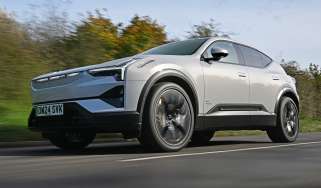Debunking the most common myths around plug-in hybrids
We tackle some of the misconceptions about the growing PHEV market
It’s been a decade since plug-in hybrids first hit the market, and as demand for cleaner methods of transportation increases, interest in PHEVs continues to gain momentum.
But misunderstandings about PHEVs and the interplay between their combustion engines and electric motors still persist. So here we’ll debunk some of the most common myths surrounding PHEVs, from their complexity to their performance compared to their internal combustion engine cousins.
Myth: PHEV batteries need frequent replacing
Battery technology continues to evolve in many different fields, with researchers attempting to design more energy efficient storage than the current lithium-ion battery packs. But while the future is likely to hold more advanced energy-storing tech, the current crop of PHEV batteries have a far longer lifespan than people seem to believe.
While you may have heard it rumoured that they have a short shelf life, years after PHEVs first hit the road there have been no reports of wholesale battery replacements, indicating that the vast majority continue to be perfectly reliable even after a significant amount of time. BMW’s warranty covers PHEV batteries for six years from the date of first registration or up to 60,000 miles – a demonstration of the manufacturer’s trust in its battery technology.
Myth: PHEVs are complicated to drive
EVs and traditional non-electric cars are easy to understand – they’re just powered by one system or another. Throwing a combination of the two into the mix might sound complex, but in reality, driving them is very simple.
BMW PHEVs feature Auto eDrive – the default setting, which automatically and intelligently switches between petrol or electric based on the driving conditions – Max eDrive – which allows for purely electric running – and Save Battery – which prioritises maintaining or increasing the battery’s charge. Different manufacturers might give their modes different names, but they amount to the same thing.
The interface of PHEVs has evolved in recent years to more closely replicate what you would expect from a traditional non-electric car, so drivers new to PHEVs should feel comfortable behind the wheel in no time.
Myth: PHEVs are slow and underpowered
One persistent myth is that PHEVs somehow underperform their petrol and diesel equivalents. The range of PHEVs is huge, from versatile hatchbacks to powerful SUVs like the BMW X5 xDrive45e – offering as much diversity and variety of performance as you could wish for.
PHEVs may even have the edge in some respects, being able to add an instant dose of torque from their electric motors for an extra surge of power.
Myth: PHEVs are harder to get serviced
It’s true that a PHEV’s combination of combustion engine and electric motor makes it more complicated than an EV or ICE vehicle, and when they first hit the market there were far fewer garages or dealerships able to service them.
But today, PHEVs are an established part of the motoring landscape; servicing for PHEVs is widely available, so you won’t have to look far. Most franchised dealers are capable of PHEV servicing and maintenance, too.
Myth: PHEVs will stall if the onboard batteries run flat
The interplay between the combustion engine and electric motors in PHEVs has given rise to a few misunderstandings about how they work. One persistent myth is that your car will stall if the battery runs flat.
In reality, PHEVs are designed to be able to run purely on their petrol or diesel engines whenever they need to, or you want them to. And, as mentioned above, they have driving modes specifically designed to top up the battery, so it’s highly unlikely that you would ever find yourself in a situation where it has run flat.
Discover more about BMW’s plug-in hybrid models at bmw.co.uk
Most Popular

EV Deal of the Day: Dacia Spring is amazingly good value at £116 per month



